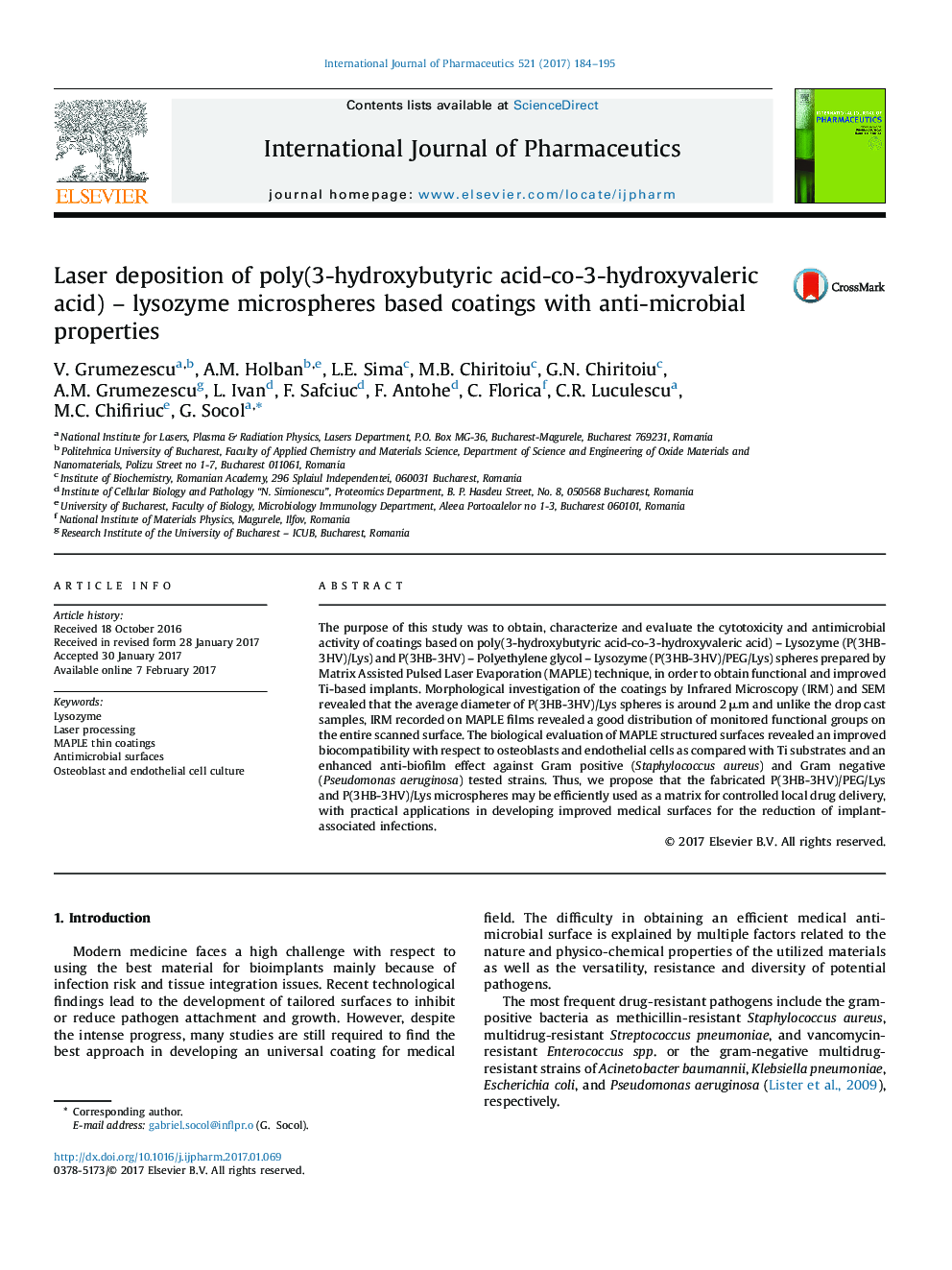| Article ID | Journal | Published Year | Pages | File Type |
|---|---|---|---|---|
| 5550591 | International Journal of Pharmaceutics | 2017 | 12 Pages |
The purpose of this study was to obtain, characterize and evaluate the cytotoxicity and antimicrobial activity of coatings based on poly(3-hydroxybutyric acid-co-3-hydroxyvaleric acid) - Lysozyme (P(3HB-3HV)/Lys) and P(3HB-3HV) - Polyethylene glycol - Lysozyme (P(3HB-3HV)/PEG/Lys) spheres prepared by Matrix Assisted Pulsed Laser Evaporation (MAPLE) technique, in order to obtain functional and improved Ti-based implants. Morphological investigation of the coatings by Infrared Microscopy (IRM) and SEM revealed that the average diameter of P(3HB-3HV)/Lys spheres is around 2 μm and unlike the drop cast samples, IRM recorded on MAPLE films revealed a good distribution of monitored functional groups on the entire scanned surface. The biological evaluation of MAPLE structured surfaces revealed an improved biocompatibility with respect to osteoblasts and endothelial cells as compared with Ti substrates and an enhanced anti-biofilm effect against Gram positive (Staphylococcus aureus) and Gram negative (Pseudomonas aeruginosa) tested strains. Thus, we propose that the fabricated P(3HB-3HV)/PEG/Lys and P(3HB-3HV)/Lys microspheres may be efficiently used as a matrix for controlled local drug delivery, with practical applications in developing improved medical surfaces for the reduction of implant-associated infections.
Graphical abstractDownload high-res image (180KB)Download full-size image
